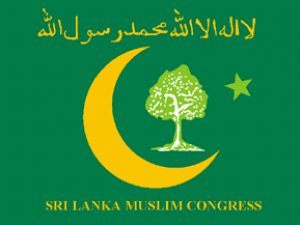Short Description
Two years since anti- Muslim riots killed four, injured over 80 and displaced some 10,000 residents of Aluthgama, Beruwala and Dharga Town — three Muslim-populated coastal towns — many Muslims who remember the incident still harbor fears of renewed sectarian violence.
Two years since anti- Muslim riots killed four, injured over 80 and displaced some 10,000 residents of Aluthgama, Beruwala and Dharga Town — three Muslim-populated coastal towns — many Muslims who remember the incident still harbor fears of renewed sectarian violence.
Many of the families involved, who live in close-knit Muslim communities, still recall Sri Lanka’s June 15 pre-Ramadan riots with terror.
“Neighbors became attackers, who still roam free,” said Yasir Zarook, a 28-year-old shop owner who suffered the equivalent of thousands of dollars in losses due to the riots.
“I will never feel safe again in my own hometown,” he said.
For A.H. Mohammed, 64, a retired teacher from the education ministry, the losses were two-fold.
Having lost his home to the 2014 riots, fate struck again when his son — who had suffered severe trauma as a result of the violence — died in May of this year.
“It’s as if pain and loss were finding new ways to return to our lives,” Mohammed lamented.
While most destroyed homes have since been rebuilt, business owners say their lives have only partially resumed.
“You have a home, but no livelihood,” said Zarook, who has waited two years to receive compensation for his destroyed shop and inventory.
Residents are generally satisfied with the pace of reconstruction, however, which is being carried out by the Sri Lankan army’s engineering corps.
“Homes are being rebuilt according to their original plans,” military spokesman Jayanath Kuruppu said.
– Lingering tensions
Yet sectarian tensions remain to this day.
It was alleged that a Buddhist monk had been threatened by a local Muslim, sparking the 2014 riots by non-resident Sinhalese, led by the Bodu Bala Sena (BBS), a hardline Buddhist group.
It has since been confirmed that the military and police collaborated in unleashing violence, although the BBS continues to deny any responsibility.
Thowffiq Samsudeen, a Muslim shop owner from Beruwala, told Anadolu Agency: “It’s as if they envied our wealth. But why, when we’ve had a deep friendship with the Sinhalese for decades?”
The Sinhalese people, who are predominantly Buddhist, account for roughly 75 percent of Sri Lanka’s population.
“It seems that the targeting of over 60 businesses was designed to debilitate the local economy,” said Imtiaz Barkeer Marker, a former legislator from the Beruwala constituency and a respected multiculturalist.
“There was growing radicalization, fanned by the nationalism practiced by the former administration,” he said. “The anti-Muslim wave was a byproduct of that.”
Gamini Viyangoda, a political commentator and head of Citizens’ Power, a local civil society initiative, said: “The core of the violence came from within the administration.”
Now, two years later, most impartial observers were calling for a multi-religious, multicultural Sri Lanka, said Wijitha Thera, a Buddhist priest engaged in interfaith dialogue.
“The two communities have co-existed for decades without any tension,” he said. “The 2014 incidents were the result of deep-rooted racism that resonated with the existing regime at the time.”
source:
http://muslimnews.co.uk/news/south-asia/sri-lanka-2-years-sri-lankans-recall-deadly-anti-muslim-riots/






![نصيحتي لك: اذكر الله [1 / 12] نصيحتي لك: اذكر الله [1 / 12]](https://islamstory.com/images/upload/content_thumbs/1913613138ragheb-al-serjany-videos.jpg)


Comments
Send your comment